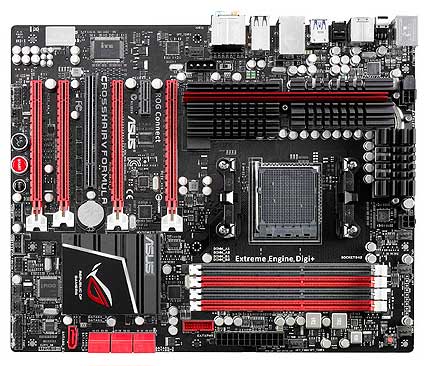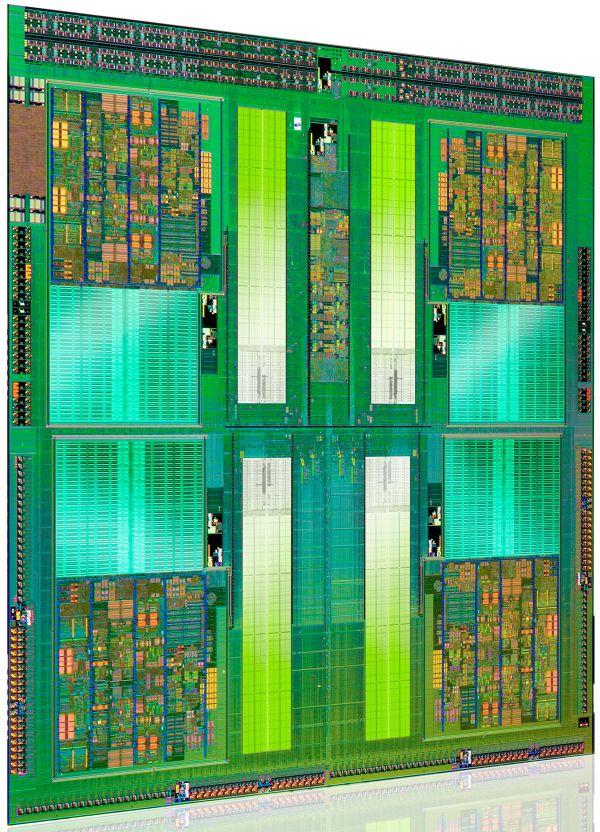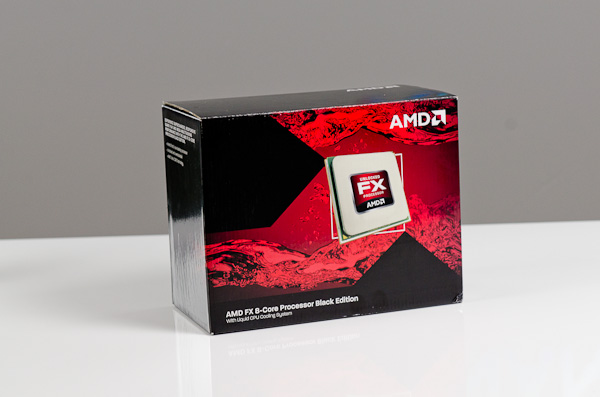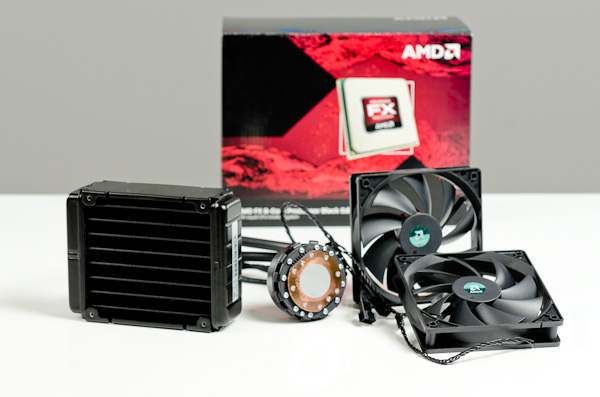The Bulldozer Review: AMD FX-8150 Tested
by Anand Lal Shimpi on October 12, 2011 1:27 AM ESTAMD has been trailing Intel in the x86 performance space for years now. Ever since the introduction of the first Core 2 processors in 2006, AMD hasn't been able to recover and return to the heyday of the Athlon 64 and Athlon 64 X2. Instead the company has remained relevant by driving costs down and competing largely in the sub-$200 microprocessor space. AMD's ability to hold on was largely due to its more-cores-for-less strategy. Thanks to aggressive pricing on its triple and hexa-core parts, for users who needed tons of cores, AMD has been delivering a lot of value over the past couple of years.
Recently however Intel has been able to drive its per-core performance up with Sandy Bridge, where it's becoming increasingly difficult to recommend AMD alternatives with higher core counts. The heavily threaded desktop niche is tough to sell to, particularly when you force users to take a significant hit on single threaded performance in order to achieve value there. For a while now AMD has needed a brand new architecture, something that could lead to dominance in heavily threaded workloads while addressing its deficiencies in lightly threaded consumer workloads. After much waiting, we get that new architecture today. Bulldozer is here.
It's branded the AMD FX processor and it's only available in a single die configuration. Measuring 315mm2 and weighing in at around 2 billion transistors (that's nearly GPU-sized fellas), Bulldozer isn't that much smaller than existing 45nm 6-core Phenom II designs despite being built on Global Foundries' 32nm SOI process. Both die area and transistor count are up significantly over Sandy Bridge, which on Intel's 32nm HKMG process is only 995M transistors with a die size of 216mm2. This is one big chip.
| CPU Specification Comparison | ||||||||
| CPU | Manufacturing Process | Cores | Transistor Count | Die Size | ||||
| AMD Bulldozer 8C | 32nm | 8 | 1.2B* | 315mm2 | ||||
| AMD Thuban 6C | 45nm | 6 | 904M | 346mm2 | ||||
| AMD Deneb 4C | 45nm | 4 | 758M | 258mm2 | ||||
| Intel Gulftown 6C | 32nm | 6 | 1.17B | 240mm2 | ||||
| Intel Nehalem/Bloomfield 4C | 45nm | 4 | 731M | 263mm2 | ||||
| Intel Sandy Bridge 4C | 32nm | 4 | 995M | 216mm2 | ||||
| Intel Lynnfield 4C | 45nm | 4 | 774M | 296mm2 | ||||
| Intel Clarkdale 2C | 32nm | 2 | 384M | 81mm2 | ||||
| Intel Sandy Bridge 2C (GT1) | 32nm | 2 | 504M | 131mm2 | ||||
| Intel Sandy Bridge 2C (GT2) | 32nm | 2 | 624M | 149mm2 | ||||
Update: AMD originally told us Bulldozer was a 2B transistor chip. It has since told us that the 8C Bulldozer is actually 1.2B transistors. The die size is still accurate at 315mm2.
Architecturally Bulldozer is a significant departure from anything we've ever seen before. We'll go into greater detail later on in this piece, but the building block in AMD's latest architecture is the Bulldozer module. Each module features two integer cores and a shared floating point core. FP hardware is larger and used less frequently in desktop (and server workloads), so AMD decided to share it between every two cores rather than offer a 1:1 ratio between int/fp cores on Bulldozer. AMD advertises Bulldozer based FX parts based on the number of integer cores. Thus a two module Bulldozer CPU, has four integer cores (and 2 FP cores) and is thus sold as a quad-core CPU. A four module Bulldozer part with eight integer cores is called an eight-core CPU. There are obvious implications from a performance standpoint, but we'll get to those shortly.
The FX Lineup
There are a total of 7 AMD FX CPUs that AMD is announcing today, although only four are slated for near-term availability.
| CPU Specification Comparison | |||||||||
| Processor | Cores | Clock Speed | Max Turbo | NB Clock | L2 Cache | TDP | Price | ||
| AMD FX-8150 | 8 | 3.6GHz | 4.2GHz | 2.2GHz | 8MB | 125W | $245 | ||
| AMD FX-8120 | 8 | 3.1GHz | 4.0GHz | 2.2GHz | 8MB | 95W/125W | $205 | ||
| AMD FX-8100* | 8 | 2.8GHz | 3.7GHz | 2GHz | 8MB | 95W | N/A | ||
| AMD FX-6100 | 6 | 3.3GHz | 3.9GHz | 2GHz | 6MB | 95W | $165 | ||
| AMD FX-4170* | 4 | 4.2GHz | 4.3GHz | 2.2GHz | 4MB | 125W | N/A | ||
| AMD FX-B4150* | 4 | 3.8GHz | 4GHz | 2.2GHz | 4MB | 95W | N/A | ||
| AMD FX-4100 | 4 | 3.6GHz | 3.8GHz | 2GHz | 4MB | 95W | $115 | ||
| AMD Phenom II X6 1100T | 6 | 3.2GHz | 3.6GHz | 2GHz | 3MB | 125W | $190 | ||
| AMD Phenom II X4 980 | 4 | 3.7GHz | N/A | 2GHz | 2MB | 125W | $170 | ||
The FX-8150, 8120, 6100 and 4100 are what's launching today. The first digit in AMD's FX model numbers indicates the number of cores with the 8150 and 8120 boasting eight, while the 6100 only has six active integer cores (three Bulldozer modules). The FX-4100 features four integer cores. L2 cache scales with core count (2MB per module), while the L3 cache size remains fixed at 8MB regardless of SKU.
North Bridge and L3 cache frequency alternate between 2.0GHz and 2.2GHz depending on the part. TDPs range between 95W and 125W as well, with the FX-8120 being offered in both 125W and 95W versions.
There's only a single Bulldozer die. The 6 and 4 core versions simply feature cores disabled on the die. AMD insists this time around, core unlocking won't be possible on these harvested parts.
The huge gap in clock speed between the 8120 and 8150 are troubling. Typically we see linear frequency graduations but the fact that there's a 16% difference between these two SKUs seems to point to process problems limiting yield at higher frequencies—at least for the 8-core version.
Outside of the quad-core and hex-core Bulldozer pats, the only other FX processor able to exceed the 3.3GHz clock speed of the Phenom II X6 1100T is the 8150. And if you include quad-core Phenom II parts in the mix, only two Bulldozer parts ship at a higher stock frequency than the Phenom II X4 980. Granted Turbo Core will help push frequencies even higher, but these low base frequencies are troubling. For an architecture that was designed to scale to clock speeds 30% higher than its predecessor, Bulldozer doesn't seem to be coming anywhere close.
The entire FX lineup ships unlocked, which allows for some easy overclocking as you'll see soon enough.
Motherboard Compatibility
AMD is certifying its FX processors for use on Socket-AM3+ motherboards. Owners of standard AM3 motherboards may be out of luck, although motherboard manufacturers can choose to certify their boards for use with Bulldozer if they wish to do so. From AMD's perspective however, only AM3+ motherboards with BIOS/UEFI support for Bulldozer are officially supported.
All existing AM2/AM2+/AM3/AM3+ heatsinks should work with the FX processor; they simply need to be rated for the TDP of the processor you're looking to cool.

For this review, AMD supplied us with ASUS' Crosshair V Formula AM3+ motherboard based on AMD's 990FX chipset.
AMD does offer six 6Gbps SATA ports on its 990FX chipset, a significant upgrade from the two 6Gbps ports on Intel's 6-series chipsets. Unbuffered ECC memory is also supported for those who desire the added security, once again a feature not supported on Intel's consumer grade 6-series chipsets.
Despite AMD's trend towards releasing APUs with integrated GPUs (thus requiring a new socket), AMD insists that the AM3+ platform will live to see one more processor generation before it's retired.
AMD's Liquid CPU Cooling System
Alongside its new FX processors AMD is introducing its first branded liquid cooling system manufactured by Asetek.
AMD's cooling system is similar to other offerings from companies like Antec and Corsair. The system is self contained, you never have to worry about adding any more liquid to it.
Attach the cooling module to your CPU socket via a simple bracket, and affix the radiator to your case and you're good to go. The radiator is cooled via two 120mm fans, also included in the box.
AMD doesn't have an exact idea on pricing or availability of its liquid cooling solution, but I'm told to expect it to be around $100 once available. My sample actually arrived less than 12 hours ago, so expect a follow up with performance analysis later this week.
The Roadmap
For the first time in far too long, AMD is actually being very forthcoming about its future plans. At a recent tech day about Bulldozer, AMD laid out its CPU core roadmap through 2014. The code names are below:
Piledriver you already know about, it's at the heart of Trinity, which is the 2—4 core APU due out in early 2012. Piledriver will increase CPU core performance by around 10—15% over Bulldozer, although it will initially appear in a lower performance segment. Remember that final generation of AM3+ CPU I mentioned earlier? I fully expect that to be a GPU-less Piledriver CPU due out sometime in 2012.
Steamroller will follow in 2013, again improving performance (at the core level) by around 10—15%. Excavator will do the same in 2014. AMD believes that these performance increases will be sufficient to keep up with Intel over time, however I'll let you be the judge of that once we get to the Bulldozer performance numbers.
The other thing to note about AMD's roadmap is it effectively puts the x86 business on an annual cadence, in line with what we've seen from the AMD GPU folks. Although AMD isn't talking about what process nodes to expect all of these cores at, it looks like AMD will finally have an answer to Intel's tick-tock release schedule moving forward.























430 Comments
View All Comments
medi01 - Thursday, October 13, 2011 - link
Slightest "problem" imaginable with AMD GPUs would make it into titles.nVidia article would go with comparing cherry picked overclocked board vs standard from AMD, with laughable "explanations" of "oh nVidia marketing asked us to do it, we kinda refused but then we thought that since we've already kinda refused, we might still do what they've asked".
"Objectively", are you kidding me?
JKflipflop98 - Thursday, October 13, 2011 - link
Anand runs the test, then writes down the number. Then he runs the test on the other PC, and writes down the number.If your number is lower, then it's physics "badmouthing" your precious, and not the site.
actionjksn - Wednesday, October 12, 2011 - link
@medi01 Considering the results I think Anand were more than kind enough to AMD.medi01 - Thursday, October 13, 2011 - link
I recall low power AMD CPUs being tested on 1000Watt PSUs on this very site. How normal was that, cough? iPhones "forgoten in pocket" (authors comment) on comparison photos where they would look unfavourably)Thing with tests is, you have games that favour one manufacturer, then other games that favour another. Choose "right" set of games, and viola...
The move with 1000Watt PSU on 35W TDP CPU is TOO DAMN LOW and should never happen.
On top of it, absolute majority of games is more GPU sensitive, than CPU sensitive. Now one could reduce resolution to ridiculously low levels so that CPU becomes a bottleneck. but then, who on earth would care whether you get 150 or 194 frames per second at a resolution which you'll never use?
Stas - Thursday, October 13, 2011 - link
Not sure what the deal is with PSUs or what article you're referring to. I'm assuming it made AMD power consumption look worse than it was because 1kW PSU was running at 10% load, thus way out of efficiency range. But w/e. My comment is mostly on CPU performance in games. Just because you don't run a game on the top-end CPU with $800 in multi-gpu tandem at lowest settings, doesn't mean it shouldn't be used to determine CPU performance. By making the CPU the bottleneck, you make it do as much as it can side-by-side with the GPU spiting out frames while whistling tunes and picking it's finger nails. There is more load on CPU than GPU. Which ever CPU is faster - that CPU will provide more FPS. Simple as that.Sure, no one will see 20%-30% performance difference using more appropriate resolution and quality settings. But we're enthusiasts, we want to see peak performance difference and extreme loads. Most synthetic tests are irrelevant in everyday use, but performance has been measured that way for decades.
jleach1 - Friday, October 14, 2011 - link
I haven't seen one single sentence that was questionable in a and graphics review. In fact I'm glad to say that I'm a big fan of Intel CPU and and hour combos, and have never had even as much as a hint of bias.As a over exaggeration, in an age where were all stuffing multiple cards in our systems, and cards are efficient, reliable, powerful, and they run cool. yes the drivers have sucked in the past, but they don't really.
(emphasis on the word seem)
NvIdia cards have just seemed clunky and hot as hell since the 400 series. I don't feel like gaming next to a space heater. And I definitely don't want to pay 40 percent more for ten percent performance just to have a space heater and bragging rights.
its like amd graphics are similar to intels CPU lineup, they're great performance per dollar parts, and they're efficient. But NvIdia and Intel graphics are like amd CPUs, they're either inefficient, or they're good at only a few things.
The moral? what the *$&* amd....you might as well write off the whole desktop business if the competition IS fifty percent faster and gaining ground....that 15 percent you're promising next year better be closer to 50 or I'm going to forget about your processors altogether.
jleach1 - Friday, October 14, 2011 - link
Intel CPU and amd combos*....sorry for the bat grammar. Writing on a tablet with Swype.CeriseCogburn - Wednesday, March 21, 2012 - link
40% more cost and 10% more performance?You said that's across the board.
I'm certainly glad you aren't the reviewer here on anything. I mean really that was over the top.
CeriseCogburn - Friday, June 8, 2012 - link
They went fullblown favor the bullsnoozer by using the GPU limited amd hd5870 to make the stupid amd cpu look good.Thank your lucky stars they did that much for you.
MJEvans - Thursday, October 13, 2011 - link
I think your later point is exactly why the FPU support isn't as strong. (most) tasks that use FPU appear to be operating on large matrices of data, while sequential processing seems to have a good design idea (even if the implementation is a little immature and a little early), but slower latency l1/l2 cache access. I hope that's an area that will be addressed by the next iteration.